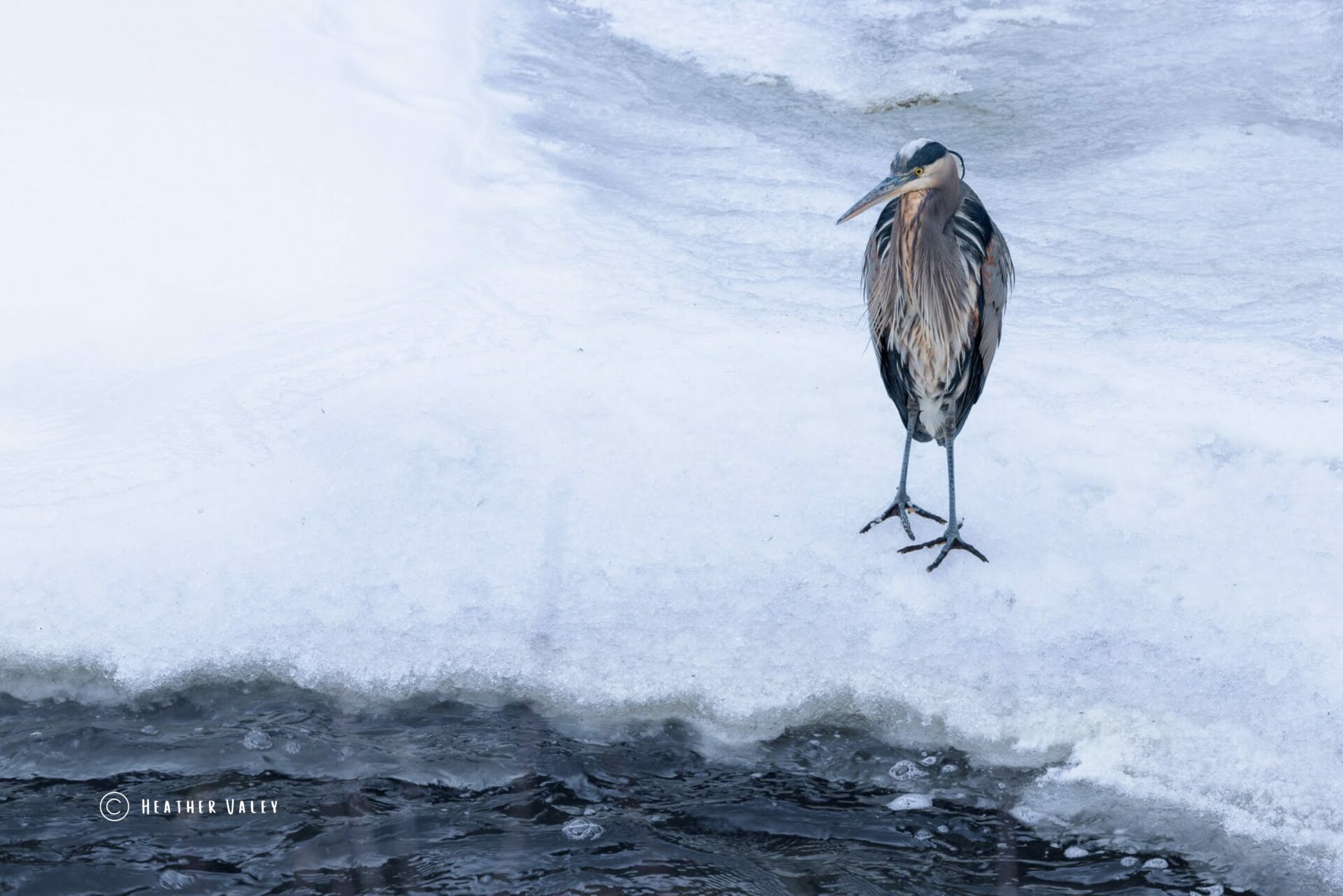caption: A Great Blue Heron Contemplates an Icy Fishing Hole – copyright 2023 Heather Valey
Do you enjoy Nature Fix? Join our bi-weekly newsletter with exclusive content and conversation about Colorado wildlife and nature. Join us!
Introduction
When winter socks into Colorado’s Mountains and plains, our wildlife undergoes some remarkable adaptations to cope with the challenges of the season… so let’s dive in and look at some of them.
- Hibernation: Most people are familiar with the concept of hibernation. The animals we always think of are bears. While bears truly do hibernate, many animals we assume hibernate go into a state of torpor during the winter. We tend to not understand the difference between hibernation and torpor, so I’m going to break it down here. Hibernation is a long-term state that lasts for weeks or months and is most seen in bears and yellow-bellied marmots in Colorado. Torpor is short-term, it lasts for a few hours or a day and occurs frequently. Animals in torpor wake up periodically to forage and take bathroom breaks. Animals that live in Colorado that go into torpor in the winter include Colorado chipmunk, moose, pine squirrels and chickadees.
- Migration:
Many species of wildlife in Colorado employ migration as their strategy to get through the winter. Elk and mule deer, embark on long journeys to lower elevations where food is more abundant. There are many birds that also migrate south when winter comes to Colorado, including yellow warblers and yellow breasted chats. Some insects migrate for the winter too, like the Monarch Butterfly.

- Camouflaged Coat Changes: Colorado’s native species, like the least weasel, don a winter wardrobe of white fur that ensures their survival in the snow. These animals can change the color of their fur, transitioning from brown to white to seamlessly blend with their snowy habitat. This offers them a better chance of blending in with their surroundings when hunting. Other animals that employ this strategy in Colorado are the snowshoe hare and the ptarmigan.

- Hoarders: Some animals like Beaver and Pika store up food for the winter and survive on their cache throughout the cold season. Beaver’s stash twigs underwater near their lodge and pikas build piles of forbs called “hay piles”. While the beaver stays in his lodge and only leaves to get food from his underwater stash, the pika stays in its rock pile under the snow and makes trips to its hay pile for food. It depends on the thick layer of snow to keep its rock pile insulated during the winter.
- Diet Changes:
- As snow blankets the ground, foraging becomes a more strenuous task for herbivores. Animals like bighorn sheep devour grass in the summer but turn to woody forbs in the winter.
- Physiological Advantages and/or Changes: Some animals are built to withstand the weather like the Lynx with its big snowshoe feet, but others go through changes when the cold season arrives like the thickening of fur or addition of a fat layer that they build up over the summer. The bison’s winter coat is extremely thick and insulating, so much so that snow does not melt from it by the bison’s body heat.

Conclusion:
When winter hits the wildlife in Colorado show a remarkable display of resilience and adaptation. From the stealthy camouflage of fur, strategic migration patterns to diet changes these creatures navigate the challenges of winter amazingly.
Resources
- Ask A Naturalist: What do Chipmunks do in the Winter
- It’s Time for you to Learn What Beavers do in Winter
- Winter Ecology Teacher Guide
- How Bison Survive Winter in the Northern Plains
- There is a Secret World Under the Snow and its in Trouble
- How Wildlife Survives Colorado Winters
- Insect Overwintering
- Bison Bellows: The Winter Survivor





